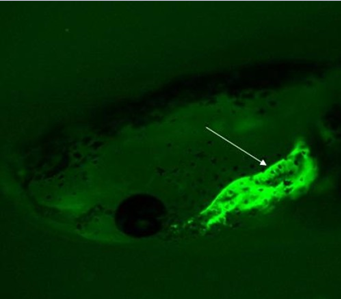Nat Commun:新技术实现染色体外源基因的有效插入

近日,发表在自然子刊杂志Nature Communications上的一项研究报告中,来自广岛大学等处的研究人员利用一种新型的基因敲入技术,实现了外源基因向基因组中的有效插入,目前该技术已经在人类细胞、动物模型比如青蛙和蚕中成功实现,该技术不仅可以使得基因在培养中的细胞被插入,也可以在多种有机体中实现外源基因的插入。
利用可编程的核酸酶进行的基因组编辑可以实现同源重组介导的基因插入,然而同源重组的活性水平在大多数培养细胞和有机体中非常低,这就为当前开发同源重组介导的基因插入的新型技术带来了一定的难题。
文章中,研究者Ken-ichi T. Suzuki表示,我们利用一种转录激活因子样效应物核酸酶(TALENs),及通过精确融入目标染色体的系统(PITCh)介导的有规律间隔的短回文重复序列聚集成功地实现了基因的插入。TALENs介导的PITCh可以使得外源供体DNA可以靶向有效地整合入人类及动物模型细胞的染色体中;研究人员还表示,未来以CRISPR/Cas9介导的PITCh技术或许可以在没有携带质粒骨架序列的情况下应用于人类细胞的研究中。
PITCh系统在很多方面都有应用,包括开发疾病模型细胞、供药物筛选的动物模型及疗法的开发等;研究者表示,这种新型的基因插入技术将可以增加有用的重组蛋白质类的产生效率,比如培养的动物细胞中的制药材料等。在蚕的细胞中,这种新型技术奖可以帮助制造更多的功能性重组蚕丝蛋白,研究人员最后说道,PITCh系统将可以在很多种细胞中增强基因编辑技术的有效性,尤其是在那些同源重组水平较低的细胞中。
Microhomology-mediated end-joining-dependent integration of donor DNA in cells and animals using TALENs and CRISPR/Cas9
Shota Nakade, Takuya Tsubota, Yuto Sakane, Satoshi Kume, Naoaki Sakamoto, Masanobu Obara, Takaaki Daimon, Hideki Sezutsu, Takashi Yamamoto, Tetsushi Sakuma & Ken-ichi T. Suzuki
Genome engineering using programmable nucleases enables homologous recombination (HR)-mediated gene knock-in. However, the labour used to construct targeting vectors containing homology arms and difficulties in inducing HR in some cell type and organisms represent technical hurdles for the application of HR-mediated knock-in technology. Here, we introduce an alternative strategy for gene knock-in using transcription activator-like effector nucleases (TALENs) and clustered regularly interspaced short palindromic repeats (CRISPR)/CRISPR-associated 9 (Cas9) mediated by microhomology-mediated end-joining, termed the PITCh (Precise Integration into Target Chromosome) system. TALEN-mediated PITCh, termed TAL-PITCh, enables efficient integration of exogenous donor DNA in human cells and animals, including silkworms and frogs. We further demonstrate that CRISPR/Cas9-mediated PITCh, termed CRIS-PITCh, can be applied in human cells without carrying the plasmid backbone sequence. Thus, our PITCh-ing strategies will be useful for a variety of applications, not only in cultured cells, but also in various organisms, including invertebrates and vertebrates.

